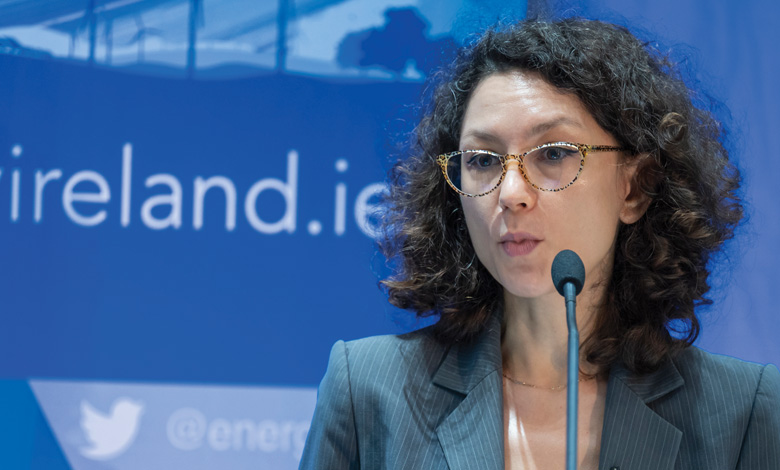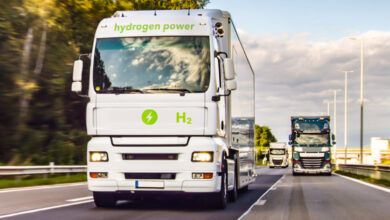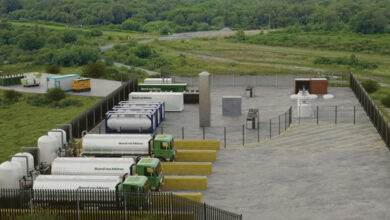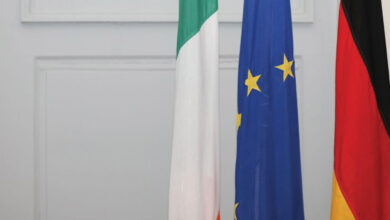Unlocking Ireland’s hydrogen potential

Hydrogen Europe’s infrastructure and energy policy director Kamila Waciega discusses the path for Ireland’s green hydrogen market and the challenges regarding infrastructure development.
Hydrogen is one of the leading options for renewable energy storage. With the market expanding in both Europe and beyond, Kamila Waciega believes that Ireland must invest in hydrogen infrastructure, and suggests that there is an opportunity to become an export hub.
Hydrogen Europe assists the hydrogen sector in policy support and identifies challenges relating to scaling renewable hydrogen delivery. As such, Waciega and her colleagues have researched at length the benefits of Ireland producing green hydrogen. These include:
1. decarbonising ‘hard to abate’ sectors within industry;
2. ensuring no transport mode is left behind in the energy transition;
3. reducing societal waste and enhancing EU value chains and skills; and
4. making a net zero energy system possible.
Waciega explains: “We envision that hydrogen is a solution that will serve both the industry and energy transport, while also broader serving societal purposes, and contributing to optimisation of the energy system”
“It is expected that electrification will drive the entire energy transition with almost 50 per cent of energy generated by renewable electricity by 2050. However, we are also expecting that 20 per cent will come from renewable hydrogen and its derivatives.”
For that to happen, Hydrogen Europe has been advocating for a European framework for the clean hydrogen market and related infrastructure. The development of the latter involves a combination of European legislation, setting renewable hydrogen targets, and concrete financial project support.
“To be ready for green hydrogen production tomorrow, we must have necessary enabling infrastructure today.”
Kamilla Waciega, Hydrogen Europe
Within the framework, one of the main renewable hydrogen targets that will drive the market for hydrogen and infrastructure, the amended Renewable Energy Directive (RED III) includes binding targets that have been agreed upon for the industry and transport sector. The directive is also part of the Fit for 55 package, which aims to reduce greenhouse gas emissions by at least 55 per cent by 2030.
Waciega believes that the Red III Directive is essential for increased hydrogen supply and therefore for providing the right signals and incentives for hydrogen infrastructure.
“For the first time, we have a deal which not only contains a general target in terms of renewable energies for the entire Union, but we also have specific targets for industry and for transport. This time around, we also have targets for hydrogen; this is completely new for the industry in general, and our sector in particular.”
RED III sets the target of 42.5 per cent of renewable fuels of non-biological origin (RFNBOs) in the overall hydrogen consumed by industry by 2030 and 60 per cent by 2035.
As for the transport sector, there is a combined sub-target of 5.5 per cent for advanced biofuels and renewable fuels of non-biological origin. There is an additional target of a minimum of 1 per cent generated by renewable liquid or gaseous transport fuels which will be from RFNBOs primarily.
Waciega explains: “This is something very important because this is a framework which will drive the entire market.”
Favourable conditions
The policy framework from the European Commission strategy aims to accelerate the production of hydrogen from renewable energy sources, so it becomes a major component of Europe’s energy supply by 2050. With two delegated acts formally published in June 2023, the policy framework is essential for Ireland to consider when moving to hydrogen.
“We already have a deal – this means that the three institutions, the European Parliament, the European Commission, and the Council of the European Union agree that this is the form of text that we want to have into EU legislation, and this must be transposed into national legislation. That will also happen in Ireland,” Waciega explicates.
Waciega explains that there is a significant geographical imbalance between renewable hydrogen generation potential and hydrogen demand.
Ireland, she outlines, has particularly favourable conditions for green hydrogen production given its “immense renewable energy potential” in offshore wind has the capability to produce “significantly more renewable electricity than needed to meet indigenous needs”.
REPowerEU target
REPowerEU set a remarkably ambitious target for hydrogen production though Waciega suggests that the policy framework is inadequate to drive it.
“To be ready for green hydrogen production tomorrow, we must have the enabling infrastructure today,” she says, adding: “We need to think about the time it takes to complete these types of projects.”
“In Ireland, developing the infrastructure needed for hydrogen production, transport and storage, it will unlock the possibility of meeting internal consumption demand but above all, there is a great prospect of becoming an export hub for the resource through gas interconnectors and shipping.”
Waciega concludes that Ireland must have two major priorities if it is to become “the power plant of Europe”. The first is to deliver on renewable energy sources (RES) commitments and accelerate investment in renewable resources. The second is to create mechanisms for investing in hydrogen production facilities as well as infrastructure.





